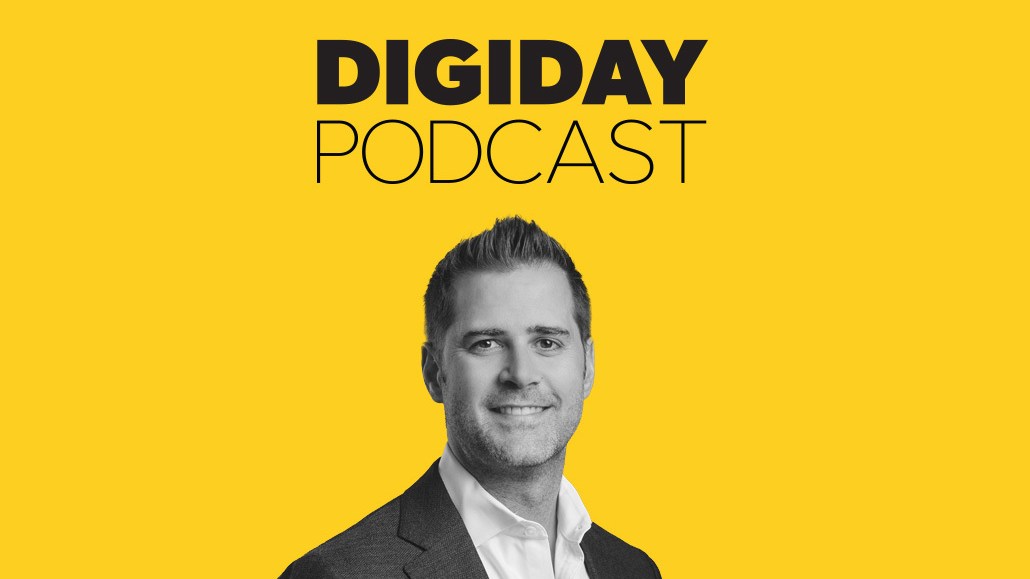Save 50% on a 3-month Digiday+ membership. Ends Dec 5.
My Code’s CEO says a floor, not a ceiling, has been set by advertisers for multicultural marketing

Subscribe: Apple Podcasts • Spotify
While the recent advertising slowdown has also impacted the amount of money allocated to marketing to media companies created for non-white audiences, Parker Morse, CEO and founder of My Code said that it hasn’t stopped marketers from realizing the value in reaching multicultural audiences.
In fact, while the industry standard is 5% of advertiser budgets earmarked for multicultural marketing, that figure has turned into a floor, not a ceiling, over the past few years, he said, adding that the expectation is that 2024 will see a return to growth in this sector.
On the latest episode of the Digiday Podcast, Morse talks about how My Code is iterating on the go-to-market strategy this year to ensure marketers are aware of the value in reaching multicultural and historically underrepresented audiences, both from a buying power perspective, but also from a sheer volume perspective. Morse also discusses how My Code has spent the past three years building out the portfolio of Hispanic audience-focused publications to build a more holistic representation of Latinx consumers in the United States.
Below are highlights from the conversation, which have been lightly edited and condensed for clarity.
Resetting the floor
If you take a step back, generally speaking, when you look at how brands have invested marketing dollars to diverse consumers, right now they invest about 5% of their budgets. [That’s the base amount] earmarked for diverse or multicultural marketing. The multicultural or diverse audience represents 40% of the U.S. population, and it’s outpacing the general market growth. So where future growth is going to come from is diverse consumers. And so just those facts present an opportunity for brands to find growth, and reach and resonate with an audience that they may not have fully marketed to historically.
Ad position: web_incontent_pos1
And so from a business perspective, there’s a huge opportunity for them to increase investment. We’ve seen that investment increase over the last two to three years … And so all of that movement, I believe, has created a new floor, not a ceiling, for [how] diverse marketing is moving forward. I think the general economic environment has caused that growth to slow down. But in meetings that we’ve had continually with brands and agencies, the intent has not gone away, it’s not getting cut from a budget perspective, brands are looking to invest further and deeper.
Building a diverse portfolio
We’re excited about the portfolio because when you look at diverse consumers or Hispanic consumers, for instance, they’re not homogeneous. They don’t all go to the same website. They’re not all the same person. They come from a Hispanic perspective over 20 different countries. Some are Spanish-[speaking], some are English-[speaking], 70% speak both Spanish and English. An individual in New York that’s Hispanic is very different than someone in Miami and L.A. And so a portfolio approach is really what’s needed to be able to have as many touch points with Hispanic consumers in their digital content consumption daily journey.
Entering 2024 with a clearer outlook
It’s been a good start of the year for us. I think the difference that we saw at CES last year and CES this year [is that] both years advertisers that we met with at CES were listening, engaging and having conversations [but] this year, they were more leaning into how to activate or execute against the information that we’re sharing with them. Diverse marketing and media is a vertical within the broader ecosystem and because of the opportunity for growth that these audiences represent — and the under investment that brands have made historically — I think it’s a unique growth area within the broader market.
Ad position: web_incontent_pos2
But it still remains challenged from a long-term planning perspective. I think what we’ve seen really since 2020, or since COVID, has really been more in-quarter activity than longer term planning and strategies. But I think as we enter this year, there was a feeling of more stability. And so it may not be robust growth in advertising, generally speaking, but there’s stability in the belief that at least the floor within the market has been set and brands now have a better perspective moving forward.
More in Podcasts

WPP’s turbulent 2025: Inside the reorgs, financial woes, and new leadership under Cindy Rose
WPP’s 2025 was marked by financial woes and a new CEO, Cindy Rose, as the holdco eyes 2026 with its new AI platform.

How Black Friday and Cyber Monday could ‘fast track’ OpenAI’s ad plan
OpenAI seems to be wading into advertising. Digiday breaks down the prerequisites for its ad business and why this year’s Black Friday could fast-track its ultimate roadmap.

The ‘hot dog vs. sandwich’ problem in AI advertising
The AI agents have come for programmatic advertising. And like AI’s invasion everywhere else, guardrails are needed, as Digiday editors discussed on this episode of the Digiday Podcast.
Ad position: web_bfu








